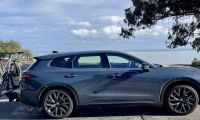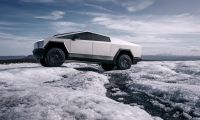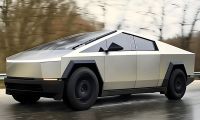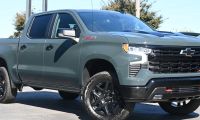As a follow up to our Tesla Police Blotter story from last week, we now have information to report that the NTSB is investigating the crash of a Tesla Model S. The driver of the Model S that crashed into a Culver City firetruck that was parked on the highway at the scene of a wreck told investigators that when the Model S drove into the firetruck it was operating on Autopilot.
The National Transportation Safety Board (NTSB) posted on its news page this week, "Two NTSB investigators from HQ to conduct field investigation of Jan. 22, crash involving a Tesla and fire truck, near Culver City, CA. Focus of field investigation is driver and vehicle factors."
A prior Tesla crash that resulted in the death of a driver appears to have some similarities to this crash. That crash involved a Tesla operating above the posted speed limit on autopilot. The car crashed into the side of a slow-moving semi-trailer making a turn at a legal intersection in broad daylight. An NTSB investigation of that accident determined that the Tesla Autopilot system had a lack of safeguards and contributed to the crash and subsequent death of the Tesla driver.
Tesla, the company, and Tesla's legions of superfans always point out that Autopilot isn't to blame in such crashes because the driver is supposed to remain in control at all times. While true, forward collision prevention with emergency auto braking is now standard on cars like the Toyota Corolla iM costing under $20K. Most mainstream models sold today offer both high and low-speed emergency auto braking to avoid hitting a stopped vehicle ahead on the roadway. Why a $100K Tesla with advanced driving aids can't reliably perform that now common task is the real question.
Related Story: Tesla Adds Auto Braking, But Just To Meet Minimum Requirements













Comments
I think it would be good if
Permalink
I think it would be good if Tesla changes the name. The word Autopilot is very misleading in its current form.
According to someone claiming
Permalink
According to someone claiming to know the driver, the Tesla was following another vehicle that swerved into another lane to avoid the fire truck. The driver reportedly said he couldn't see the fire truck until too late to avoid it. If that is true, then: 1) it is very likely the Tesla's sensors could not see the fire truck earlier too; and 2) its automatic emergency braking (which is standard on the vehicle) may have activated and been responsible for keeping the crash from being more severe. The NHTSA and NTSB teams will certainly get all data Tesla has, as well as interview the driver, so in time the truth will come out. Until then everything, including my comments, is speculation.
Why doesn't the Tesla Model S
Permalink
In reply to According to someone claiming by Bennie Farmer (not verified)
Why doesn't the Tesla Model S have predictive forward collision prevention like that on affordable Nissan vehicles that can look ahead of the car in front of it? How does a person not see an accident response crew ahead in the distance? Why doesn't a car equipped with a system called "Autopilot" have the ability to see an accident response crew in the distance? Here is a link to the Nissan system if interested: http://www.nydailynews.com/autos/street-smarts/nissan-predictive-collision-warning-article-1.2634751